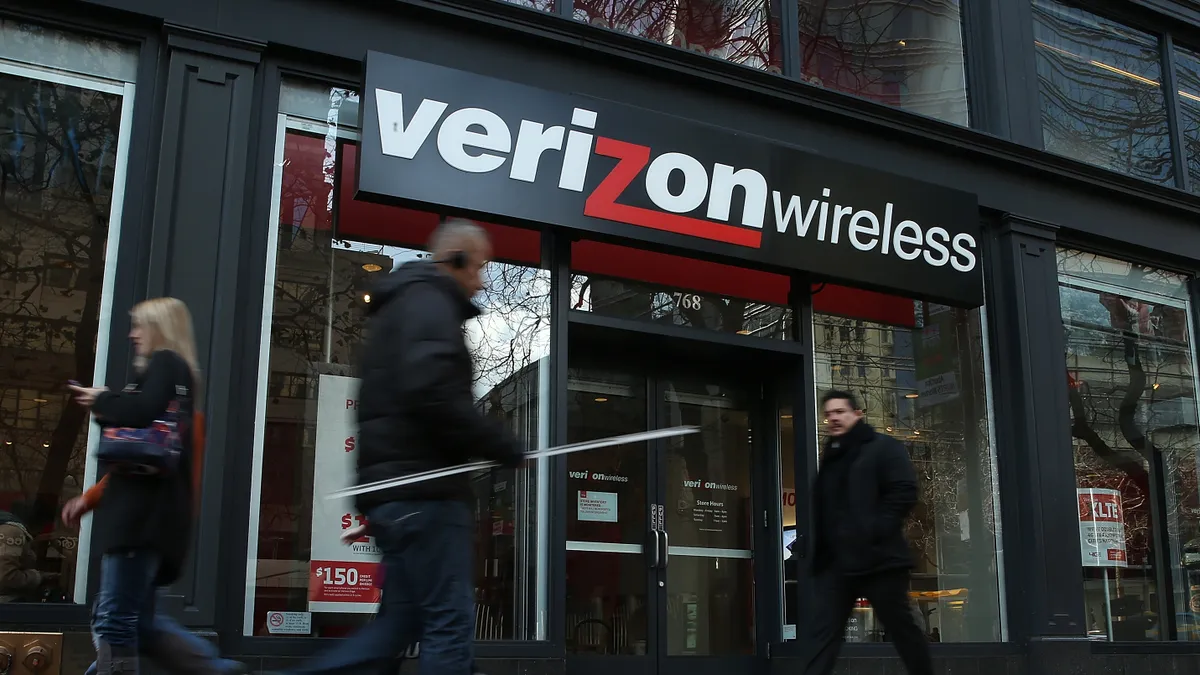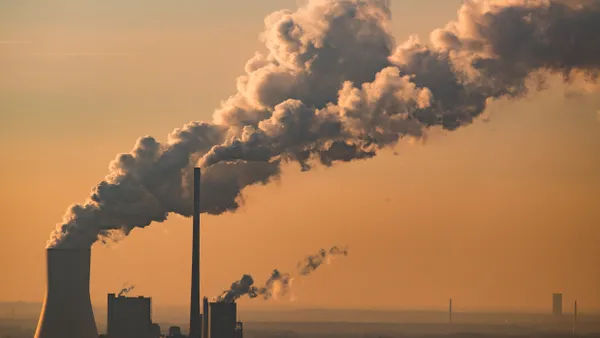Dive Brief:
- Verizon Communications has invested all of the net proceeds of its nearly $1 billion green bond in renewable energy projects spread across five states, the company announced Monday. The allocation builds on Verizon’s goal to achieve net-zero emissions across its operations by 2035.
- The telecommunications provider, which is the second-largest in the country, said it had fully allocated the $994.1 million of net proceeds from its fifth green bond to renewable energy purchase agreements. These agreements cover nearly 0.9 gigawatts of new renewable energy generating capacity, of which 53% is solar energy and 47% is wind energy, according to Verizon.
- The REPAs support renewable energy projects being developed in Illinois, Maine, North Dakota, Ohio and West Virginia. Verizon estimates the greenhouse gas emissions that will be slashed due to these green bond-funded projects will amount to 846,009 metric tons of carbon dioxide equivalent, a figure the company says corresponds to the carbon footprint generated by 188,263 passenger vehicles driven and the electricity used by 142,165 homes’ in a year.
Dive Insight:
The New York-headquartered company has issued five green bonds worth approximately $5 billion since 2019, the net proceeds of which have been invested primarily or completely in clean energy projects.
As of Feb 16., Verizon said it has 15 REPAs-backed projects that are operating commercially and generate renewable energy to support the shift to a greener grid. Last year alone, the company commenced solar projects in Indiana, North Carolina, Ohio, Texas and Maryland, and a wind project in Illinois.
“The $5 billion of green bonds that we have issued to date are instrumental to our efforts to achieve our goal of net zero emissions in our operations by 2035,” Tony Skiadas, Verizon’s executive vice president and chief financial officer, said in a release.
In its Green Bond Impact Report, which accompanied the announcement, Verizon said it wasn’t feasible to power its network operations directly from solar or wind generation as its operations are spread out across the country and require a steady supply of electricity to function. Though the company relies on sourcing power from the country’s electrical grids, which is produced from conventional fossil fuels, such as coal and oil, it aims to “accelerate the transition to greener electrical grids across the U.S” — a goal it is working on by bringing additional renewable energy to the grids through entering long-term REPAs for solar and wind power.
“These agreements do not require physical delivery of energy and can reduce Verizon’s long-term exposure to energy price volatility,” the report noted.
Verizon said it had entered into 27 REPAs for a total of approximately 3.6 gigawatts of anticipated renewable energy capacity, a move that company said positions it to exceed its 2025 target of sourcing or generating renewable energy equivalent to 50% of its total annual electricity consumption. The company also said it would continue to identify new renewable energy projects under development as it works toward its 2030 target of sourcing or generating 100% renewable energy and its 2035 net-zero goal.
The announcement comes on the heels of Verizon launching an annual industry-wide climate risk survey last year. The survey will ask respondents about the short, medium and long-term risks associated with climate change.
The survey, which was unveiled as part of Verizon’s 2023 Task Force for Climate-related Financial Disclosures report in November, came a few months after the company was confronted with an environmental and health scandal. Investors filed a class-action suit against Verizon after a Wall Street Journal investigation published in July revealed both it and AT&T have left networks of lead cables across the country. The report found the lead from the cables has seeped into the soil and water in the communities where it lies, leading to both environmental and health impacts for residents.
Verizon investors alleged the company violated securities laws by not disclosing the environmental and health risks of its lead-wrapped cables.











